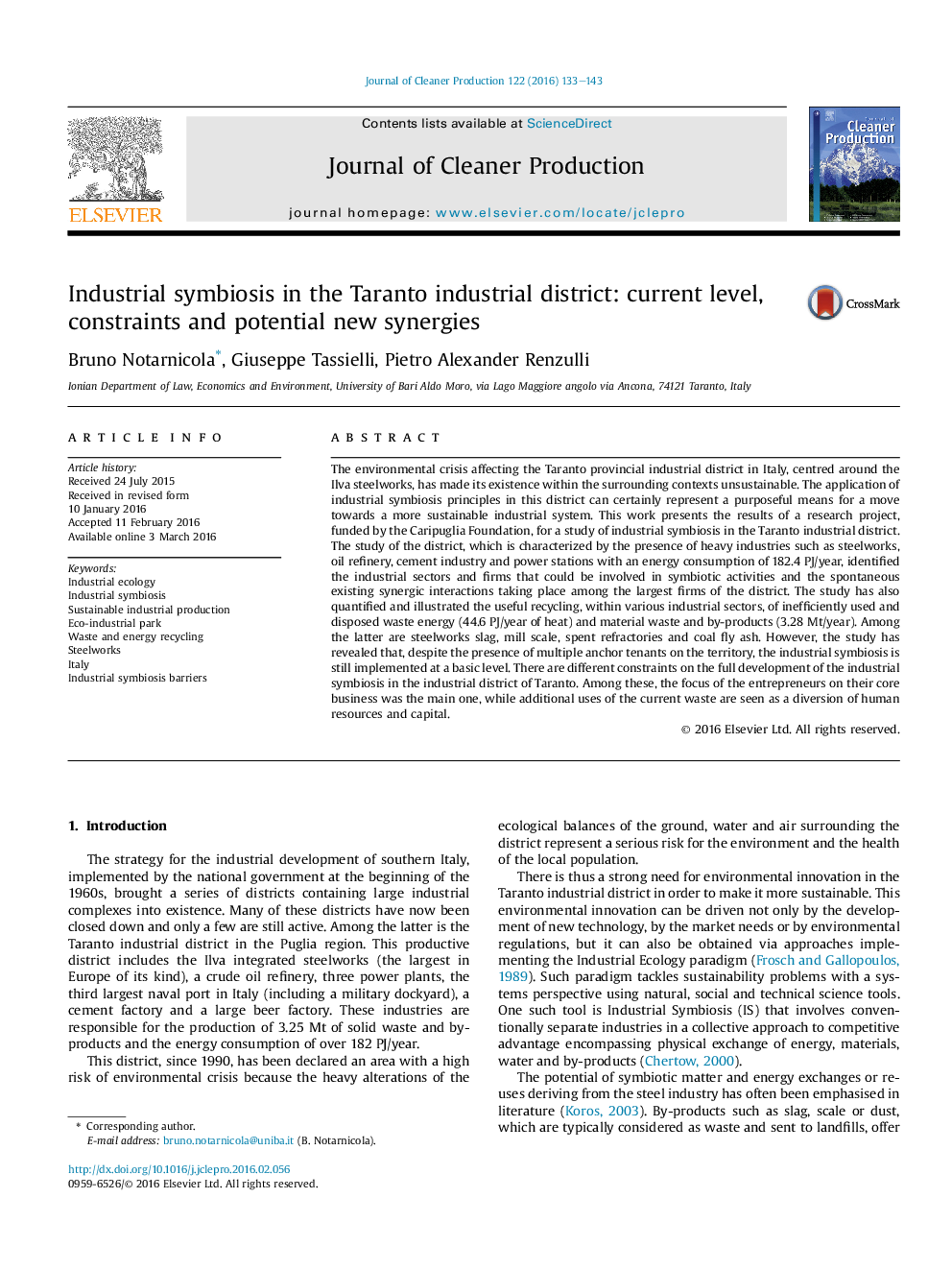| Article ID | Journal | Published Year | Pages | File Type |
|---|---|---|---|---|
| 8102390 | Journal of Cleaner Production | 2016 | 11 Pages |
Abstract
The environmental crisis affecting the Taranto provincial industrial district in Italy, centred around the Ilva steelworks, has made its existence within the surrounding contexts unsustainable. The application of industrial symbiosis principles in this district can certainly represent a purposeful means for a move towards a more sustainable industrial system. This work presents the results of a research project, funded by the Caripuglia Foundation, for a study of industrial symbiosis in the Taranto industrial district. The study of the district, which is characterized by the presence of heavy industries such as steelworks, oil refinery, cement industry and power stations with an energy consumption of 182.4Â PJ/year, identified the industrial sectors and firms that could be involved in symbiotic activities and the spontaneous existing synergic interactions taking place among the largest firms of the district. The study has also quantified and illustrated the useful recycling, within various industrial sectors, of inefficiently used and disposed waste energy (44.6Â PJ/year of heat) and material waste and by-products (3.28Â Mt/year). Among the latter are steelworks slag, mill scale, spent refractories and coal fly ash. However, the study has revealed that, despite the presence of multiple anchor tenants on the territory, the industrial symbiosis is still implemented at a basic level. There are different constraints on the full development of the industrial symbiosis in the industrial district of Taranto. Among these, the focus of the entrepreneurs on their core business was the main one, while additional uses of the current waste are seen as a diversion of human resources and capital.
Related Topics
Physical Sciences and Engineering
Energy
Renewable Energy, Sustainability and the Environment
Authors
Bruno Notarnicola, Giuseppe Tassielli, Pietro Alexander Renzulli,
